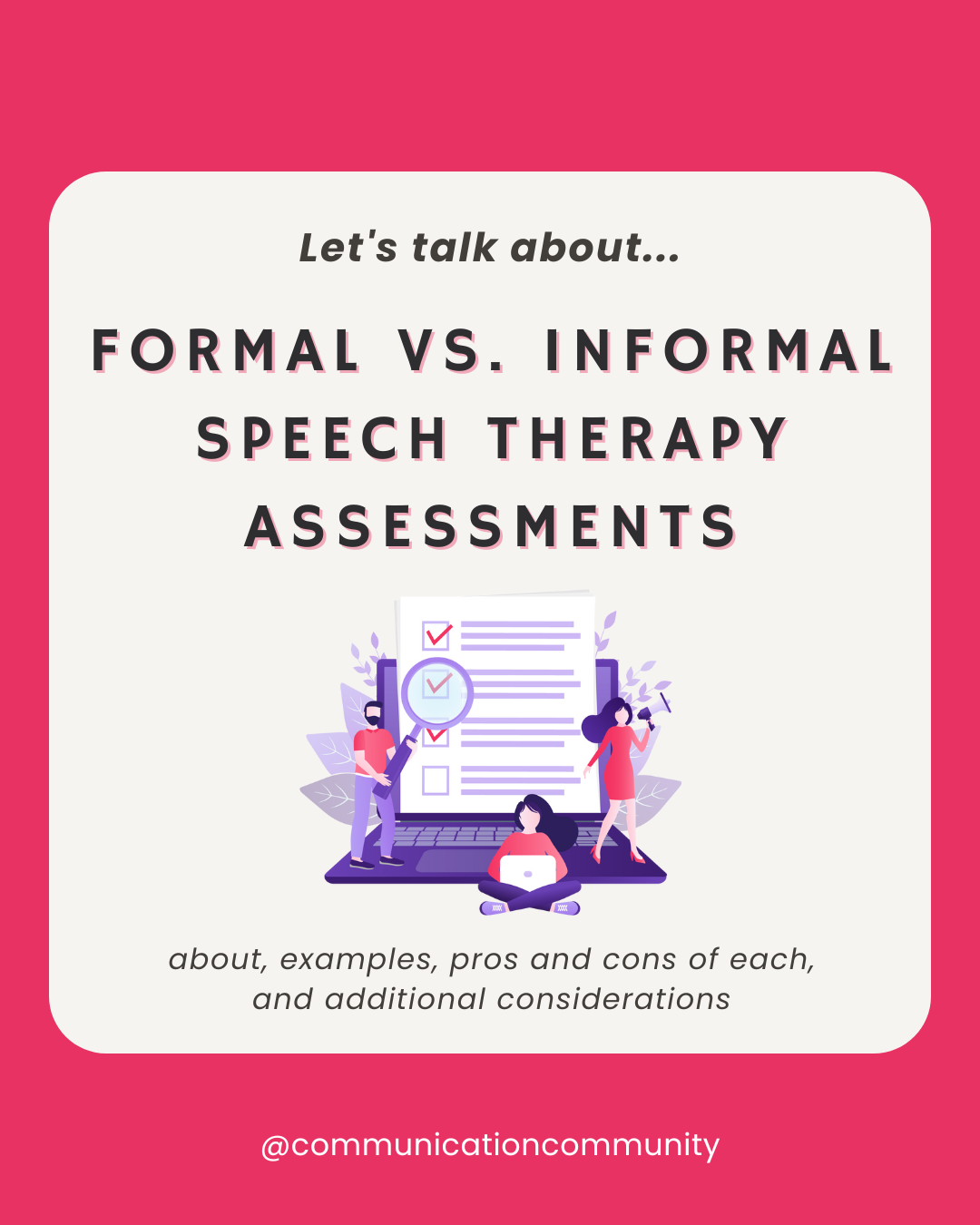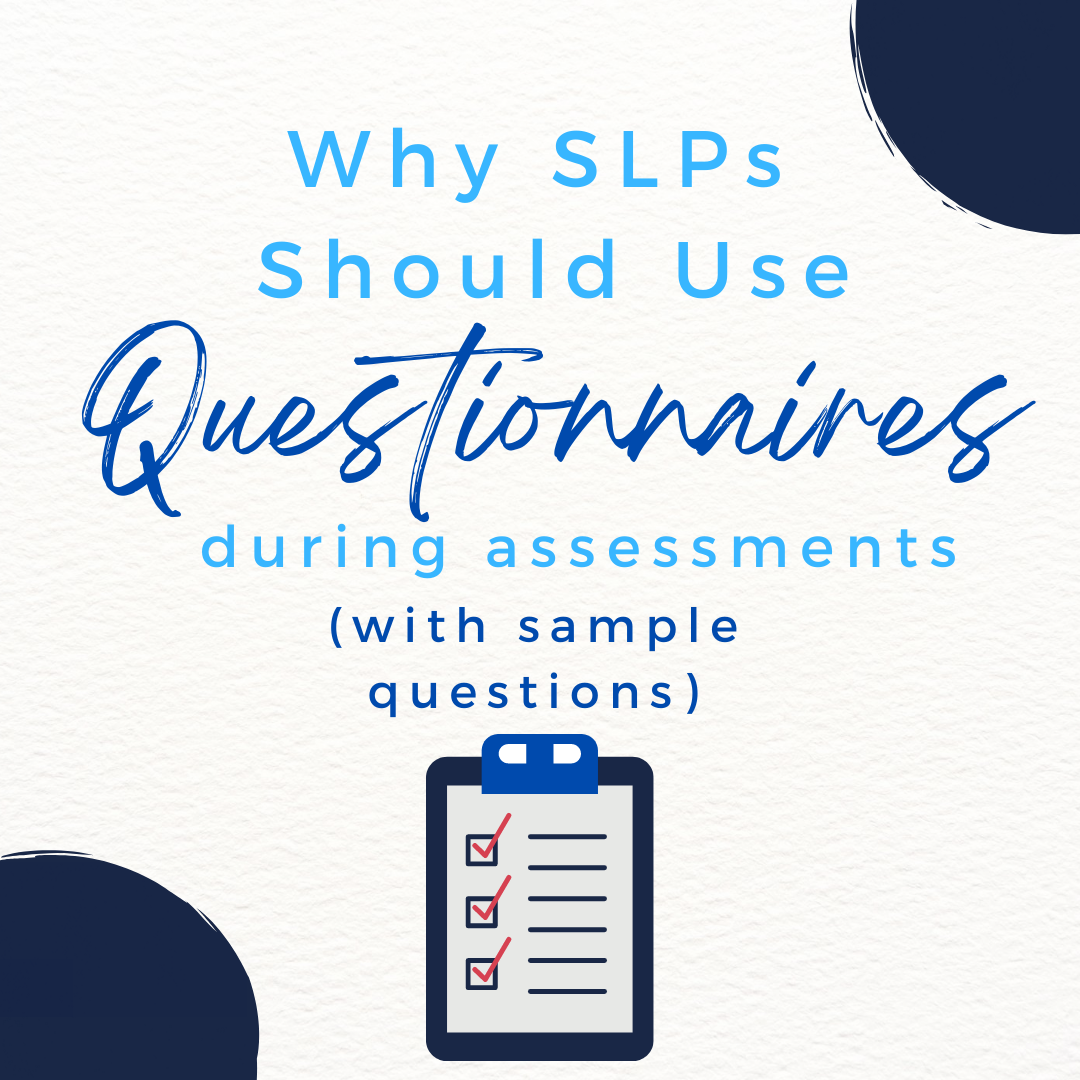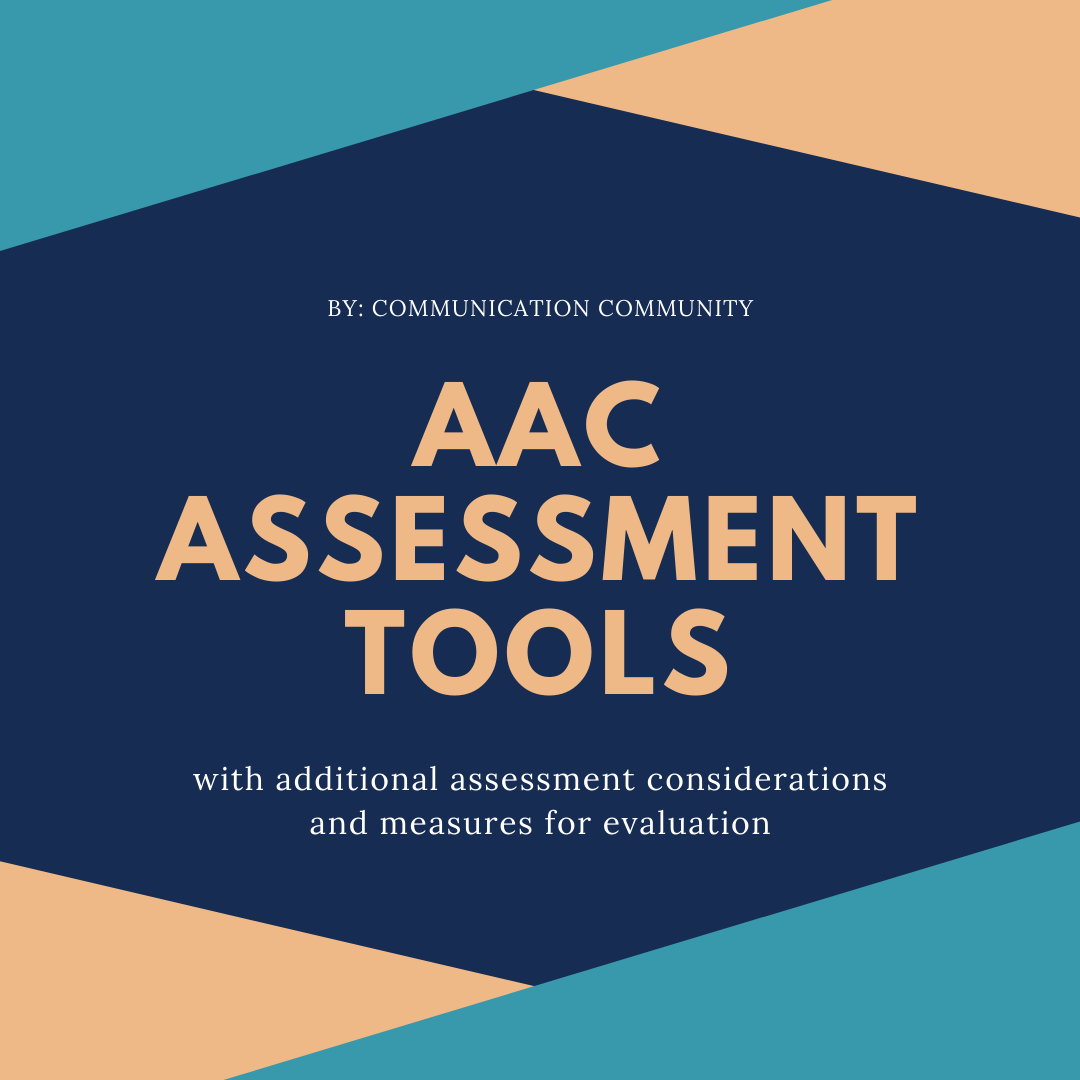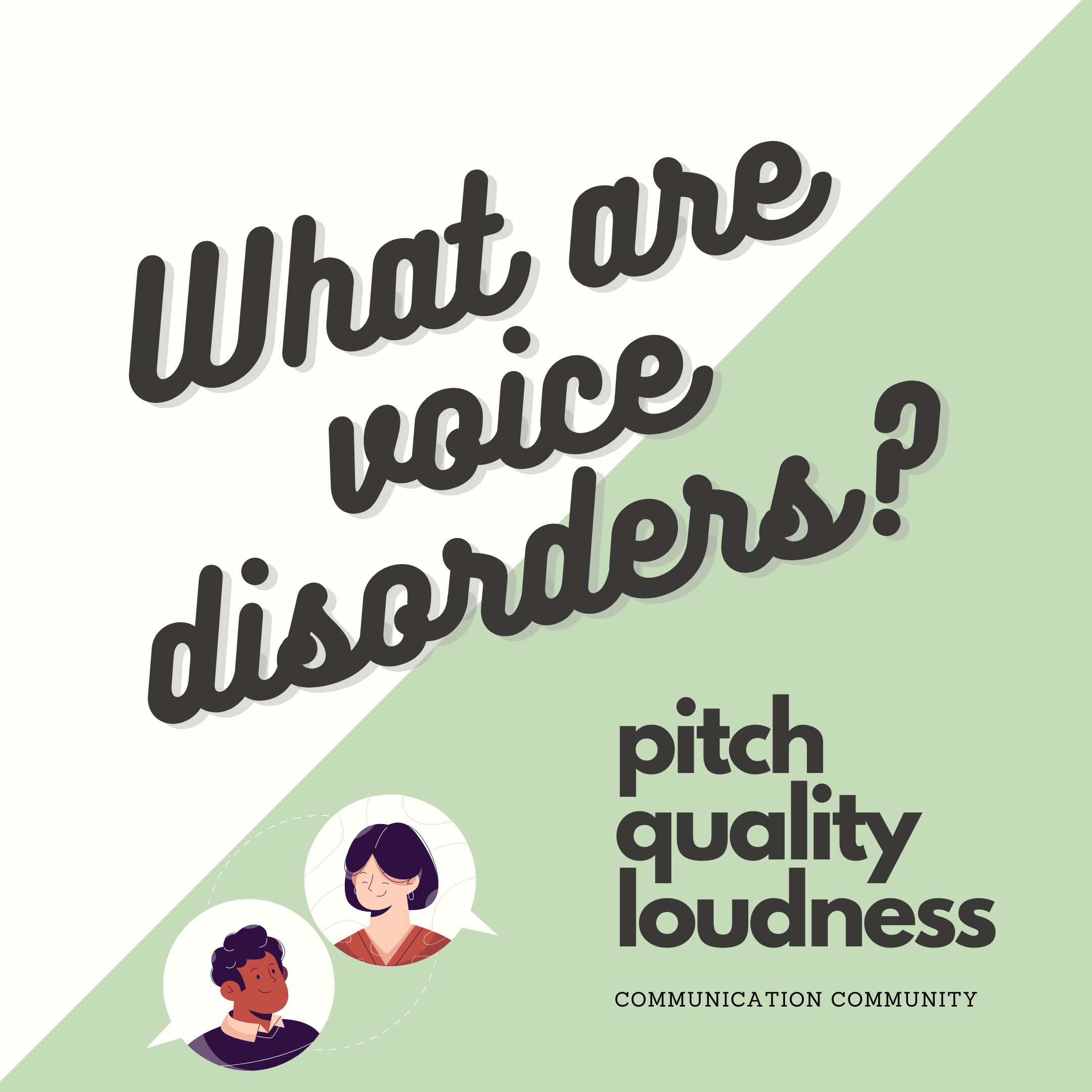The speech-language evaluation has come and gone, but what’s next? The report. Report, evaluation, diagnostic results - it may have different names, but essentially what you have is a summary of your child’s evaluation.
This summary describes your child’s performance related to speech and language. The report may vary in format, length, or method of sharing (via a meeting, an email, a hard copy in the mail), but will probably include some or all of the topics below. The following bullets include brief descriptions of the areas of evaluation to help you better understand your child’s report.
The Tests
Formal testing:
In the speech-language evaluation article, it mentioned that your child may receive some formal testing. There are many different types of formal tests, also known as standardized tests, which include the following:
Norm-referenced test:
In this part of the evaluation, your child was asked to complete tasks and the evaluator was likely taking notes on a specific form/data sheet. They then scored the test and compared your child’s scores based on other children of similar age range and gender. The final results gives a percentile or percentage number. If your child scored in the 60th percentile, this means that they performed better than 60% of the population they were scored against. If they scored in the 33rd percentile, they performed better than 33% of the population they were scored against. In one part of an exam, your child may have scored in the 70th percentile, and in another part of that exam, they scored in the 40th percentile.
The pros: A norm-referenced test allows evaluators to have an objective look at your child’s skills in a specific area. They are designed to limit potential bias in evaluating your child’s skills because all other children were given the same tasks, the same prompting, etc.
The cons: This is just one part of an evaluation. Scoring in the 33rd percentile does not necessarily mean that your child’s overall skills are better than just 33% of their comparable population.
Criterion-referenced test:
Similar to norm-referenced tests, in this part of the evaluation, your child was also asked to complete tasks and the evaluator was likely taking notes on a specific form/data sheet. It differs from norm-referenced tests because of how it is scored. One way to think about it is that your child reaches different “steps” of development, and criterion-referenced tests indicate what “step” your child was observed to be at during the evaluation. A criterion-referenced test may show that at age six, your child was only able to demonstrate an understanding of five prepositions, but at age eight, they demonstrate an understanding of ten prepositions.
The pros: Criterion-referenced tests are also objective with the goal of limiting bias. They are an easy way to look at what your child is able to do, and what skills they are still developing.
The cons: This is just one part of an evaluation. It cannot assess cultural differences, environmental differences (what your child does at home, in school, etc.), or if your child demonstrated all of their abilities during the evaluation.

Informal testing:
This is the part of the evaluation where the evaluator may have observed your child’s play skills, social skills, articulation, fluency, or any other area relevant to communication. They may have filled out a checklist or questionnaire and may have even asked you or your child’s caregivers to complete them as well.
Language sample:
There is a good chance the evaluator and/or yourself spent anywhere from 5-20 minutes interacting, playing, and/or talking to your child. A language sample is a way for the evaluator to assess your child’s communication skills in a more naturalistic environment, versus a more structured environment like a formal test. It is also a way for the evaluator to see how your child communicates and/or plays with familiar and unfamiliar individuals. It is common for the evaluator to use an audio/video recorder to get the most accurate information.
Checklists:
This is exactly what it sounds like--a list where observed skills were checked off by the evaluator or someone else (e.g. you, your child’s pediatrician, teacher, caregiver). It differs from a formal test because it is less objective and does not necessarily provide a score. It can be beneficial because it can provide greater insight into your child’s overall communication skills--such as, do they look at someone when they say “Hi,” or do they manipulate toys on their own? Checklists can give evaluators an idea of your child’s communication skills across different settings and with different individuals.
Questionnaire:
A questionnaire about your child’s social skills, play skills, or general language skills may have been something you filled out prior to or during the evaluation. This information is collected and analyzed along with the other tests and observations to provide insight into your child’s speech and language abilities, as well as their strengths and weaknesses.
Areas of evaluation
Depending on the reason your child had a speech-language evaluation, some or all of the following topics were evaluated; likely through a formal (e.g. test) and/or informal (e.g. checklist, language sample) process. The following are brief definitions of these areas of evaluation.
Articulation/phonology: This is a look at how at your child produces speech sounds (Does it sound like they have a lisp? Can they say their “R”s?) which may include specific patterns like leaving off the ends of the words
Voice: This looks at your child’s vocal quality (Is it uncharacteristically hoarse? Is it nasally?), pitch (Does it sound too high or too low?), and other factors to help determine whether it is typical for their age.
Fluency: This is commonly referred to as stuttering, or “not being able to get the words out.” This may include repeating the same sound over and over again, or not saying any sound at all. If your child was evaluated for a fluency disorder, there are many specific tests/analyses that were likely completed.
Receptive language: This is a measure of the language and communication your child understands. If they are asked to complete a task, are they able to understand what is asked of them? (whether or not they actually do it...now that’s a different story)
Expressive language: This is a measure of the language your child communicates, whether verbally or otherwise. How do they communicate with you? If they are asked to describe something, do they use gestures, single words, full sentences?
Pragmatics: This is a type of language skill that looks at your child’s social language - do they communicate functionally? How do they use language with others? Common skills that are looked at (which also varies depending on their age) include how they interact with peers/caregivers, how they take turns with others, and if they make appropriate eye contact.
Play skills: This looks at how a child plays with toys, objects, and other people. It can provide insight into their social, language, and cognitive skills, and tends to vary based on their age/abilities.
The Results
This is where it all comes together. Think about a complete evaluation as a recipe; the tests are the ingredients, the scoring and analyses are the steps to the recipe, and the results are your meal.
The evaluator should take into consideration results and observations from all formal and informal testing to determine your child’s diagnosis, if there is one, and provide recommendations. These recommendations may include further testing, monitoring certain areas, or beginning therapy sessions. They may also include a summary of your child’s strengths, weaknesses, or speech and language goals.
Other things to consider:
Swallowing/feeding skills are not mentioned here, because typically they are assessed separately from a speech and language evaluation.
There is no one “right” way to do an evaluation - so just because something was or was not included and it is mentioned here, does not invalidate the information or results. Ask the evaluator any questions you may have and seek out more information/opinions if you feel necessary!
We also have more in depth posts on many of the topics mentioned above - check them out or let us know if you're looking for more information!
Citations/further resources:







